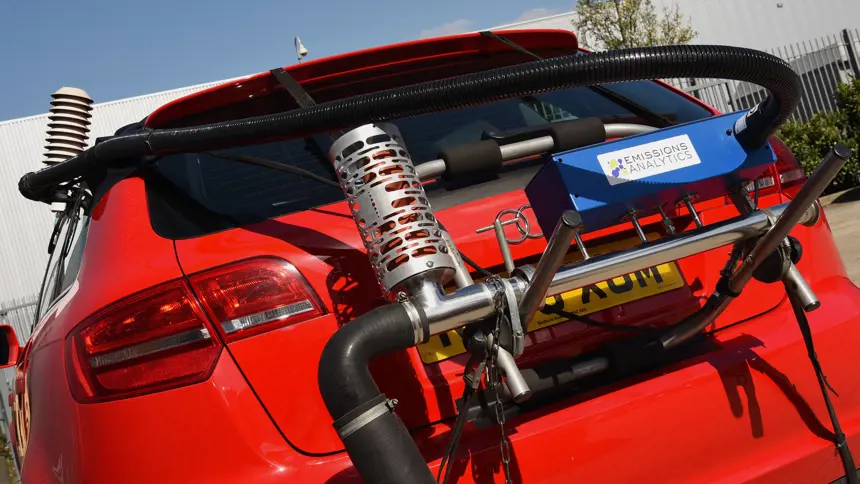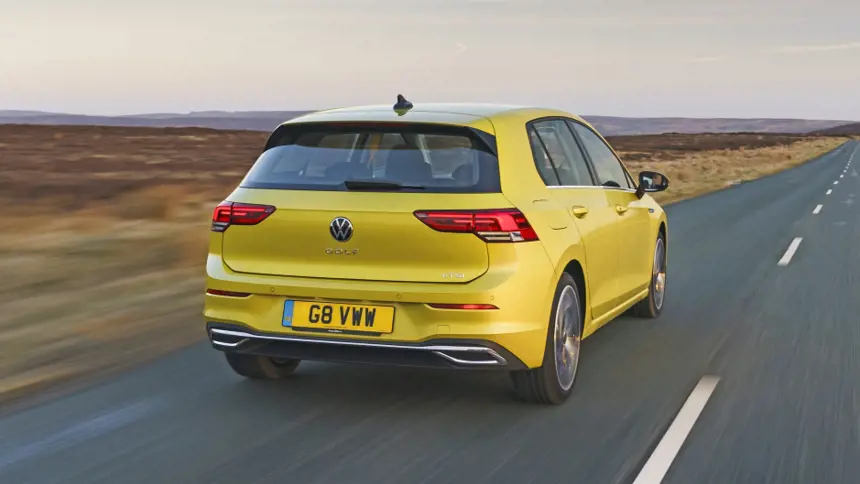WLTP: can you trust the new fuel economy test?
What is mpg? Everything you need to know about fuel economy, including the new WLTP test

If you're looking for a car that's going to save you money, one of the best ways to stem the flow of cash is to look for cars with better fuel economy - or the distance a car can travel before it runs out of fuel.
Fuel economy is measured in a few different ways, the most well-known in the UK at least is mpg (miles per gallon), while sometimes you might also see the European version: l/100km (litres per 100 kilometres). Getting to know what classes as decent fuel economy can make a big difference to how much you can expect to be spending on fuel over a month or a year.
Back in September 2018, though, the standards by which fuel economy figures are measured were updated. The previous system (called NEDC) gave cars wildly unrealistic fuel economy claims and had become unfit for purpose. Amid growing pressures for reduced reliance on fossil fuels and immediate action to address environmental issues, a tougher and more realistic form of testing (WLTP) was introduced.
WLTP is short for Worldwide harmonised Light-duty vehicle Test Procedure, and was designed to better replicate the kind of driving conditions that are commonplace on actual roads and produce fuel economy figures that were much more representative. For decades, drivers watched in dismay as their cars failed to return anything like their official mpg ratings and cost hundreds of pounds more in petrol and diesel than expected - all because the NEDC tests were undertaken in laboratories and didn’t take actual roads into account.
This means figures published under the WLTP system will be much lower than those published under NEDC. So it may appear that newer cars are actually worse on fuel economy than older models, but this is only as a result of the new test's more stringent and thorough assessment. So it's always good to be sure which test a car has undertaken before putting too much stock into its fuel economy figures.
There's plenty to get into here, so read on for more details on WLTP, what fuel economy actually is, and more.
What is mpg?

Mpg stands for miles per gallon and is a measure of a car’s fuel economy. It’s an estimate of how far a vehicle can travel on a gallon of fuel. A carmaker’s quoted figures are based on a standard emissions test, which you can use to compare one car’s efficiency against another.
Will you be able to get close to the figure that the manufacturer quotes? That depends on how and where you drive. For example, your car will burn more fuel in stop-start traffic than at a steady 60mph cruise, while sprinting away from traffic lights and climbing lots of hills will dent your mpg figure too. For drivers of plug-in hybrids, the battery needs to be regularly recharged for you to hope to get close to the official figures, which can be as much as 300mpg.
So while the current emissions test is more realistic than the one it replaced, your car’s test figures still may be some way off the mpg figure you actually see in real-world driving.
How can I get a better idea of what my car’s true economy figure should be?
A number of independent companies have conducted extensive tests that offer more accurate mpg figures than the official numbers.
One British company, Emissions Analytics, has tested over 800 vehicles over the last decade covering a wide range of makes, models and engine types. Its Equa Index also enables the company to forecast fuel economy for cars it hasn’t yet tested.
The company’s tests have found that the average car’s fuel economy is 25% lower than official NEDC numbers, with some vehicles as much as 40% below the laboratory figure.
What is WLTP?

Until recently, every car’s official fuel economy figure was calculated in a laboratory test procedure called the New European Driving Cycle (NEDC).
Cars were placed on a rolling road and went through exactly the same process, involving accelerating (at an impossibly low rate), maintaining a steady speed, braking, and stopping, over 20 minutes.
The standardised test originated in the 1970s and was designed for a different era of cars without the power or equipment of modern vehicles. There were also several loopholes that manufacturers could take advantage of to legally boost their cars’ mpg figures - by over-inflating tyres, for example.
It meant that drivers were increasingly complaining of huge disparities between the official figures and those that could be attained in real-world driving. Independent analysis such as the Equa Index showed just how misleading the official figures could be.
Plans for a new testing regime were already in hand before Volkswagen’s emissions cheating hit the news in 2015, but that scandal increased the focus on air quality and the need for a rigorous new test.
So the Worldwide Harmonised Light Vehicle Test Procedure (WLTP) was introduced in September 2017 and as of 1 September 2018, all new car models have to be tested according this new process.
How does the WLTP test work?
The WLTP cycle has been developed using real-driving data, gathered from around the world, so it should be a better representation of how people really drive than the old NEDC test.
It will still be carried out in a laboratory to ensure standard conditions for every car but the differences include:
- A four-part test with different average speeds: low, medium-high and extra high. These represent urban, suburban, main road and motorway conditions.
- More realistic ambient temperature that’s common in Europe
- More acceleration and braking, with shorter stops
- Testing cars with different equipment levels to show how optional extras can affect mpg.
With all these changes, the WLTP test should provide a much more accurate basis for calculating a car’s fuel consumption and emissions, although there’s still likely to be a discrepancy between the official figures and real-world fuel economy.
What’s the connection between mpg and CO2?

Fuel economy figures and carbon dioxide emissions (expressed in g/km) are directly related. When you’re using more fuel, your CO2 output will also increase - like mpg, the quoted CO2 figure is at best an estimate.
As well as mpg, the NEDC and WLTP procedures provide official CO2 figures, which affects the amount of tax that new car buyers pay, as well as company car tax rates.
Until 2020, the results produced in the WLTP test were converted to the old, less accurate NEDC standard, for tax purposes. But from 2020, the WLTP figures have been used to calculate tax.
As the test is tougher, official CO2 emissions have risen, which will have the most impact on business users. That’s why the best company cars are hybrid or electric, as their low CO2 figures mean tax is much less than an equivalent petrol or diesel.
How do the new WLTP figures affect a car’s fuel economy?

In short, they don’t. You wouldn’t notice a difference on the road between one car that had been NEDC-approved and an identical one that had been through the WLTP test.
The WLTP figures are the results of official laboratory tests, so they don’t affect the figures that owners get from their car when they drive it.
There are a huge number of factors that affect what fuel consumption a car returns – a figure that can often be found in the trip computer of a car. For example, if a driver accelerates harshly or brakes late and more suddenly, their fuel consumption will increase. Conversely, if a driver does everything more smoothly, anticipating any required changes in acceleration or braking, they will be better at optimising their fuel consumption.
Equally, if a car is mostly used in stop-start urban traffic, fuel economy won’t be the best, while a car that is used more on longer motorway runs, at a more constant speed, is operating more efficiently.
There are also numerous other tips and tricks that can be utilised to maximise fuel economy (try and drive with an empty boot as much as possible – so only keep things such as sets of golf clubs or other sporting equipment in the boot when actually using them) and all these factors can affect a driver’s average fuel consumption. Indeed, if a driver can return a figure that approaches the official manufacturer’s figure, they should congratulate themselves on their economical driving style.
The new WLTP figures should be closer to real-world figures than the old NEDC figures, but they’re arrived at after testing in a lab, so there will still be a difference between them and what drivers actually are able to record.
What effect will WLTP have on hybrid and electric vehicle figures?

Plug-in hybrid vehicles (PHEVs) have returned highly impressive mpg and CO2 figures under the previous NEDC testing regime – but buyers have been less impressed when they’ve realised what the real-world figures are.
This is because the test was highly complex – and very forgiving. The International Commission for Clean Transportation (ICCT) described the NEDC test as “not a demanding test cycle and hence not representative of real-world driving, [resulting] in rather optimistic estimates of energy consumption as well as PHEV electric range.”
Even though the ICCT welcomes the new WLTP test, it said: “Nevertheless, even under WLTP, official and real-world values for PHEV will continue to strongly deviate for some customers.”
It’s a similar story with the officially quoted driving ranges of electric vehicles (EVs), which are also determined using the same testing procedure.
This means that PHEVs and EVs are subject to the same caveats as petrol and diesel cars, in terms of their real-world performance, with buyers needing to be aware that the same efficient driving strategies will be required to return figures that are in any way close to the official figures.
How will WLTP affect car tax?

The new WLTP figures have been used to determine the CO2 emissions of all new cars sold since 1 September 2018 but, just to confuse matters, weren't used for calculating car tax (or company car tax - see below) until April 2020.
This means that between September 2018 and April 2020, the government continued to use NEDC figures, known as NEDC correlated figures, which are calculated by converting WLTP figures. As this is only an estimate, the NEDC correlated figures can be different to those for a similar vehicle tested under the old NEDC regime.
In terms of car tax, the change to WLTP doesn’t mean much for private buyers. The first year’s tax rate is based on CO2 emissions, but the cost of the first year’s tax is wrapped up in the cost of the car anyway. From the second year onwards, every petrol and diesel car is charged a flat rate. Cars over £40,000 are liable for an extra surcharge, payable the first five times you renew your car tax.
How will WLTP affect my company car tax?
The increased CO2 emission figures brought about by the change to WLTP has meant petrol and diesel cars have become more expensive for company-car users to tax. Benefit-in-Kind tax has a maximum rate of 37%, and you might be surprised at how many cars slot into that top tax bracket - it’s no longer just the most polluting models. The government wants to push hybrid and electric cars, so these cars are far less heavily taxed for business users. A plug-in hybrid may attract a BiK rate of 10-12%, for example, while electric cars attract a tiny 1% BiK rate for the 2021/22 tax year.
